Why are there barren flowers on cucumbers and what to do?

If the cucumbers bloom profusely, but they form little ovaries, there is no need to expect a good harvest. Most of the flowers become barren flowers. They do not bear fruit; after blooming, they die off. Such half-cucumbers can form only on bee-pollinated varieties. And this is far from all there is to know about the nature of barren flowers and the fight against this diagnosis.
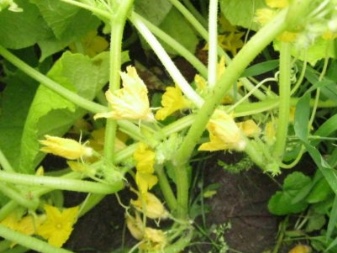
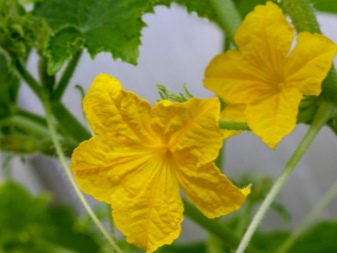
What do barren flowers look like?
All varieties of cucumbers - and it's worth starting with this - are divided into two huge groups. The first is represented by self-pollinated hybrids. Such plants do not need pollinating insects. Self-pollinated cucumbers can be grown both outdoors and in a greenhouse. Another group is bee-pollinated varieties, that is, bees and bumblebees will work as pollinators. It is better to grow these varieties outdoors.
Barren flowers are found only on the second type of cucumber cultivars. Female and male flowers grow on them, it is the male flowers that will be barren flowers, on which ovaries do not form. They will fade and fall off on their own after a few days. The ovaries will appear exclusively on female flowers. The males, obviously, should pollinate the females.
If there are many barren flowers on the plant, they cannot be cut off, since pollination in this case is completely excluded.
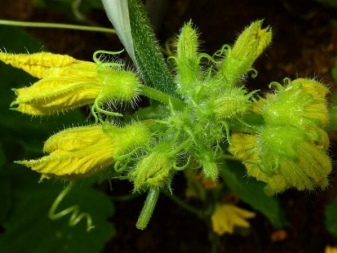
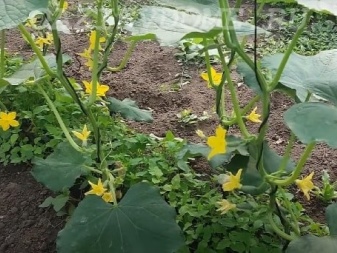
Self-pollinated hybrids have only female flowers, so there are no problems. Ideally, it should be like this: approximately equal numbers of female and male flowers appear on the wattle fence. If barren flowers predominate, expect pollination problems.
How to distinguish between flowers: the female from below will have an oblong thickening, mother plant, this is the rudiment of a cucumber... Male flowers do not have such a thickening, they consist only of a stem. The stamen flowers of the fruit are called barren flowers, because they do not have a queen cell. In fact, barren flowers are also needed, but in minimal quantities. But if there are many of them, you need to quickly find out what caused this.

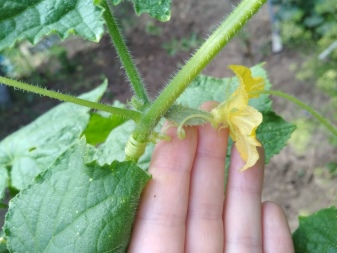
Possible reasons for the appearance
There may be several reasons, and each is probable, or there may be a coincidence of several factors.
Why there is no ovary on cucumbers.
- Poor quality seeds... With seed that can be called a marriage, it is difficult to expect a good harvest. But re-grading is more common among unverified sellers - random people in the market or in a store whose reputation is little known. If you plan to plant your own seeds, you need to pay attention to their age. For sowing, those that lay for 3-4 years after collection are suitable. Of course, two-year-olds are also used, but here they are often with empty flowers. But old seeds will give a lot of female flowers, and this almost guarantees an excellent harvest.
- Lack of light. The cucumber is considered a light-loving culture, which, when there is a lack of light, will react by the fact that just a large number of barren flowers are formed on it. Both in the greenhouse and in the open field such a problem can arise. An illuminated area, closed from drafts and winds, is the best solution. You also need to observe the planting interval so that the cucumbers do not shade each other.
- Broken watering schedule. If the soil moisture is not entirely correct, cucumbers will definitely suffer. Yes, the plant loves moisture, but not in such a way as to organize a stormy flooding for it. Cucumbers should be watered with settled warm water, irrigated - in special grooves. In the cool, on cloudy days, watering is reduced.Also, drip irrigation systems will not be superfluous. And be sure to loosen the ground between the bushes.
- Heatwave. Heat and sun for cucumbers, of course, is necessary, but also in moderation. At high temperatures under the film, under the polycarbonate, cucumbers will be uncomfortable, which is also fraught with empty flowers. If the temperature exceeds 28 degrees, the pollen in the male flowers will become sterile, unable to fertilize. Therefore, on hot days, greenhouses must be opened (but without creating drafts). The volumes of water also increase during irrigation, while controlling the humidity of the air and soil. Also, the soil should be mulched using humus, compost and hay. And so that the cucumbers do not burn, they need to be watered early in the morning or after sunset.
- Cold, bad weather. Again, cucumbers grow poorly and bloom poorly if heat and sun are lacking. There are a lot of barren flowers in such a season, the greens will be tied extremely slowly, the yield will be low. Therefore, it is advised to sow seedlings not only in open beds, but also in shelters. And in greenhouses it would be good to think about additional heating. It is also important to distinguish between zoned varieties, the germination of seedlings of which will be predicted to be high in a particular region. If the temperature gets low, watering should be reduced.
- Density of plantings... Cucumbers will not like it in cramped conditions, in fact, not a single variety will tolerate this. If the cucumbers grow in a shelter, they should be tied up in a trellis method. When planting, the specificity, climbing capacity of the variety, as well as the advice of breeders will be taken into account. There should be no more than 3-4 seedlings per square.
- Violations of the feeding scheme. It is not difficult to overfeed the cucumbers. You can determine overfeeding with nitrogen fertilizers by a continuous green mass, excessive - there will be a lot of stems, whips and leaves, but there is little flowering. Therefore, it is necessary to accurately take into account and follow the feeding schedule, excluding any spontaneity. And the same nitrogen can be introduced only before flowering.
There are many reasons, but for each - there is a solution, a scheme of actions. The season, when the weather is bad, and the varieties are not the best chosen, will not necessarily be a failure.
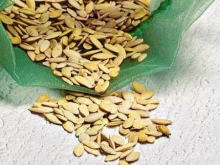


Do I need to cut off?
As already mentioned, you cannot pick off barren flowers, they still produce pollen. Only those who are significantly deformed and weakened do not give any sense, and now you can get rid of them. If you remove normally developed plants, this will lead to the opposite effect: after removal, new and new barren flowers appear. But correct pinching will help to reduce its amount.
Male flowers are usually abundant specifically on the main stem. And if they grow too much, you just need to pinch the top of the head to stimulate the growth of side shoots. It is on them that the fruits should form after that. But this method is not suitable for all varieties, if there are a lot of female flowers on the main stem, they should not be pinched. But you will have to look behind the side shoots, they have to be removed after three leaves.
Eliminating the problem, if just tearing off the barren flowers themselves is a bad job, you won't be able to remove it.
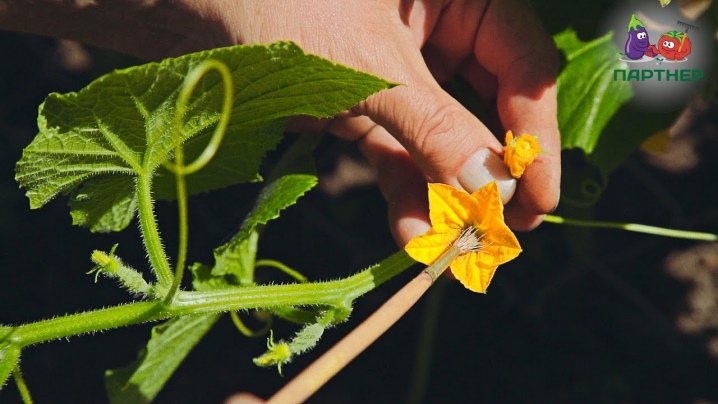
Drugs for treatment
There are, of course, relatively universal tools to help solve the problem. They are applied strictly according to the instructions, should quickly help in the fight against barren flowers. For example, the drug "Bud" is a complex of elements that provide the plant with adequate nutrition. There is a stimulation of fruit formation, the yield actually increases. 10 g of the product is dissolved in 10 l of water. And the culture has to be processed strictly during the budding period, but it is possible both at the beginning of flowering and at the time of the formation of ovaries.
And it is also considered a good growth stimulant that helps to reduce the amount of wasteland and correct the situation. "Ovary". The biostimulator will make up for the lack of ground food. The plant will have to be sprayed twice: at the beginning of flowering and at its peak.
Both described preparations are safe both for humans, that is, the end consumer of the natural product, and for bees pollinating it.
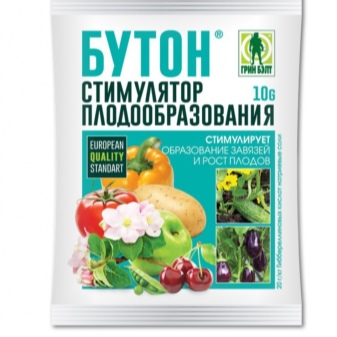
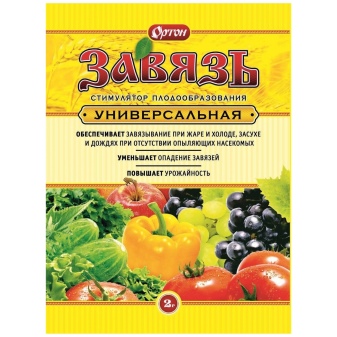
Folk remedies
So-called folk recipes can also compete with special preparations.
Milk with iodine
Iodine is a powerful remedy, in no way can you overdo it.... Many gardeners and gardeners know how it saves from powdery mildew and pests. But he is also a great helper in the budding process, as well as fruit setting. And he will show his best effect together with milk. You need to add 30 drops of iodine, 1 liter of milk, 2 tablespoons of liquid soap to 10 liters of water. All this is mixed, the plant is sprayed at the moment the appearance of 3-4 true leaves. Spraying should be done about once a week and a half. If it is decided not to mix iodine with milk, it must be diluted at the rate of 1 drop per 1 liter of water.
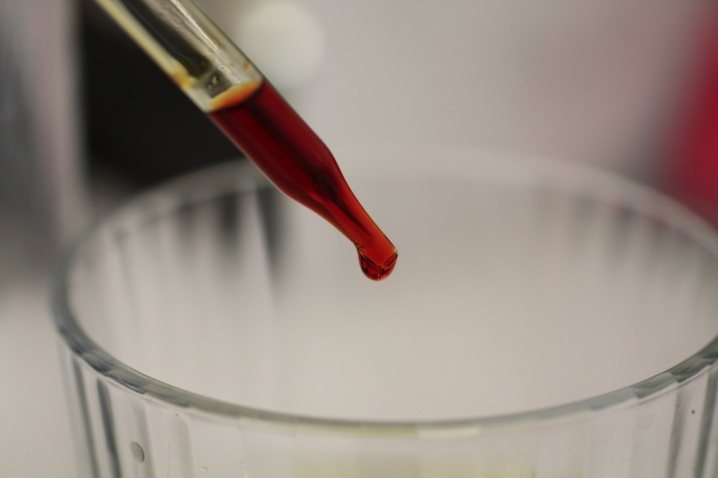
Boric acid
Also a fairly well-known (and not in vain) tool for the formation of ovaries. It also helps to increase resistance to diseases, to form the necessary immunity for a plant, for example, saving in opposition to negative weather conditions. To carry out foliar feeding, you need to dilute 1 g of powder in 1 liter of water. Spraying is carried out from all sides on flowers and leaves.
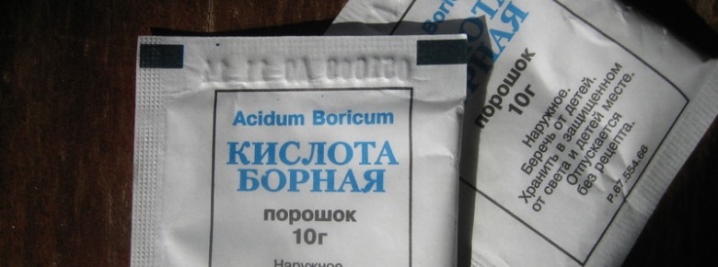
Soda
Among the popular funds, a soda solution is also distinguished, which is done as follows: 2 tablespoons of baking soda are diluted in 1 liter of water, watered until flowering at the root with the calculation of 1 glass per 1 sample. And again you need to do this before flowering.

Bread with iodine
The purpose of using this infusion is to keep the tops green longer, and also to overcome phytophthora. But the main thing is that bread with iodine increases productivity indicators. You need to take a shredded loaf of bread, soak it in a bucket of water. Then a whole bottle of iodine is sent there. All this must be infused throughout the night. In the morning, the infusion must be filtered, then poured into glass bottles, and then sent to a fairly cold place for the whole season. A liter of the resulting product is diluted in 10 liters of water, cucumbers are sprayed every 14 days.
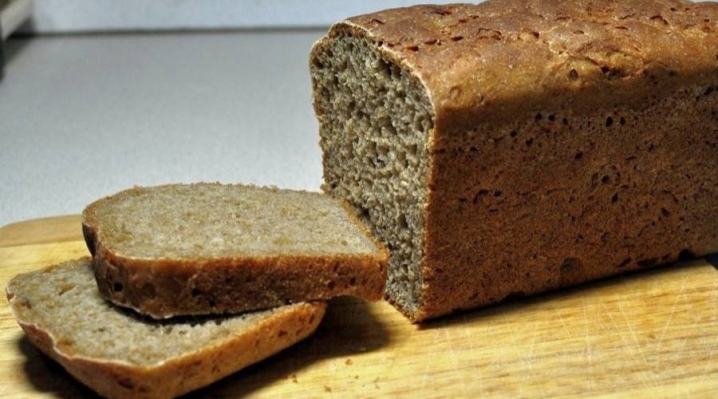
Ash
It is rich in valuable microelements, nutritional components that are vital for the normal growth of cucumbers. The ash infusion is prepared as follows: pour 1 glass of ash with hot water, leave for 24 hours. Then it is filtered, the plants are sprayed. This will make the cucumbers more stress-resistant. The number of ovaries should increase.
All these measures are very popular, they really help to get rid of the wasteland, it has been proven over time.
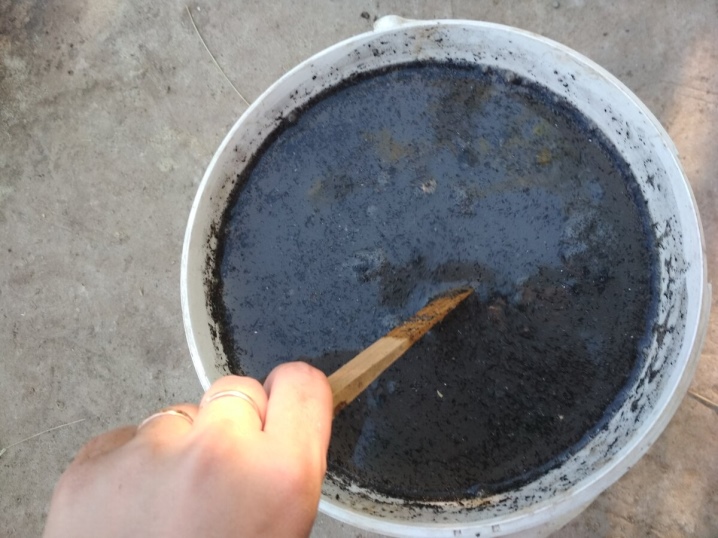
Prevention measures
But what to do so that the problem does not arise in principle, and that the plants have to be sprayed with something, is to deal with the prevention of "pathology". And here, too, there are plenty of options.
In the greenhouse
It still starts with the seed preparation process, fresh seeds, as already mentioned, are not used. You can also carry out pre-seed warming: they are kept at a temperature of 60 degrees (or slightly less), for 2 or even 3 hours. They do this both in water and in air. For example, it is convenient to warm up the seeds in a thermos: the water was heated, it was poured into the thermos, the seeds were thrown, everything was closed. A couple of hours passed, they were washed in cold water and sent to germinate on a wet cloth.
Important! The cucumber retains its germination capacity for up to 8 years, but cucumbers are considered the best, promising for 3-5 years. By the way, in two-year-old seeds, the causative agent of the dangerous cucumber mosaic absolutely dies.
The next measure is comfortable conditions in the greenhouse, because only a young plant can be influenced. Even if you dry out the soil for a short time, lower the temperature, reduce the lighting, the plant may, if not die, then become weak. But all this can be avoided.
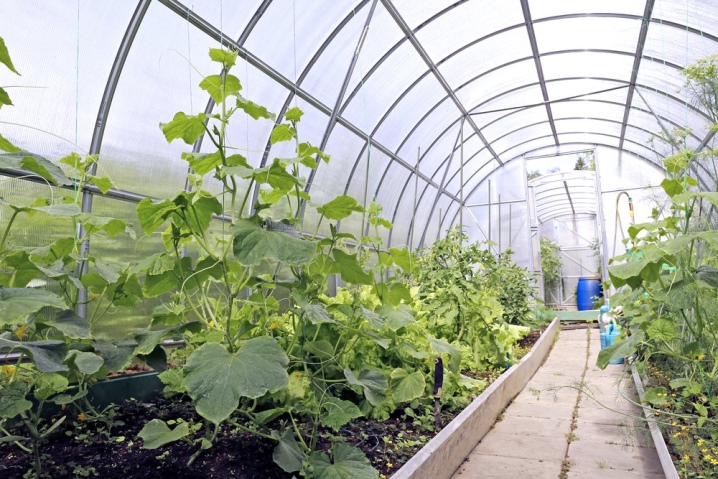
Of course, there should be enough nutrients in the soil, therefore top dressing is required. They are needed so that those very female flowers appear. But overfeeding in the greenhouse is also dangerous, because the plant reacts to it extremely negatively, there will simply be a lot of green leaves.
In the open field
If the crop is growing outdoors, you do not need to plant the plants close to each other. Leave at least 0.4 m between adjacent bushes.... It should be remembered that the culture releases loops. If the planting is too thick, it will be harder to deal with barren flowers. Next, you need to pay attention to agricultural technology: timely watering, top dressing, loosening are win-win ways to prevent barren flowers. Again, you need to be choosy with the planting material - soaking and germinating seeds should not be ignored. And if the weather conditions in the region are far from optimal, it is better to use the seedling method. And self-pollinated varieties will certainly be the safer choice.
Cucumbers are grown even on the balcony, and there they manage to withstand the necessary conditions, and feed and spray in a timely manner. Everything is real, and if you follow every point of the recommendations (well, or almost every one), the problem of the appearance of barren flowers will pass by.
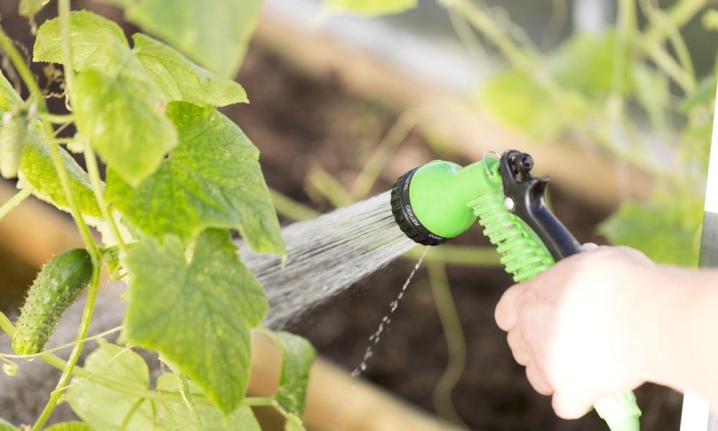













The comment was sent successfully.